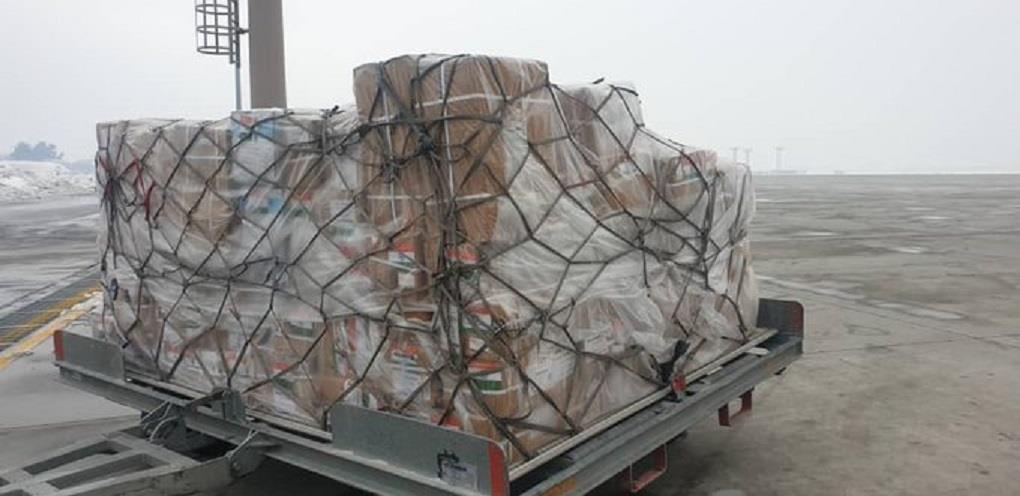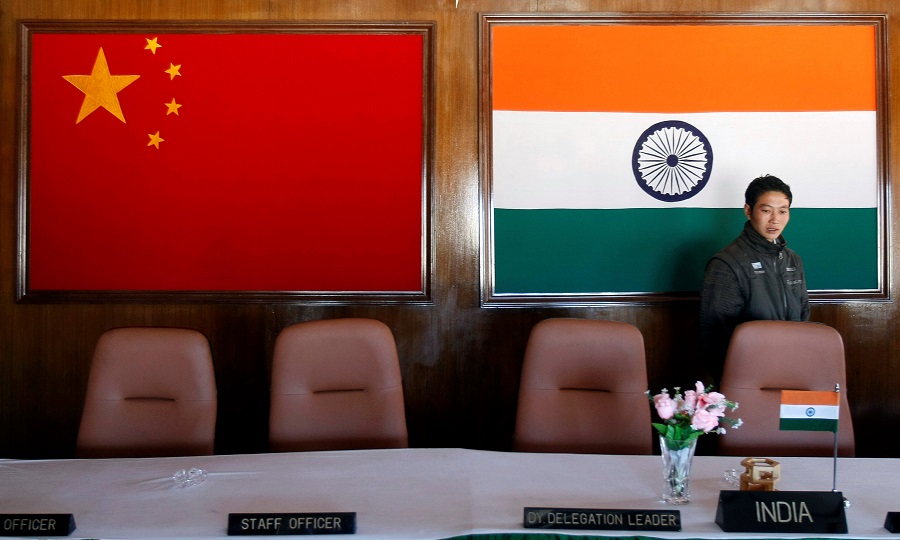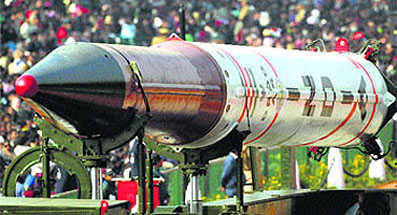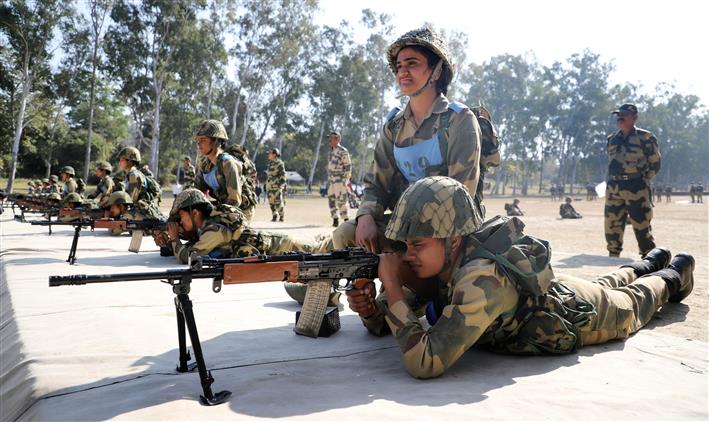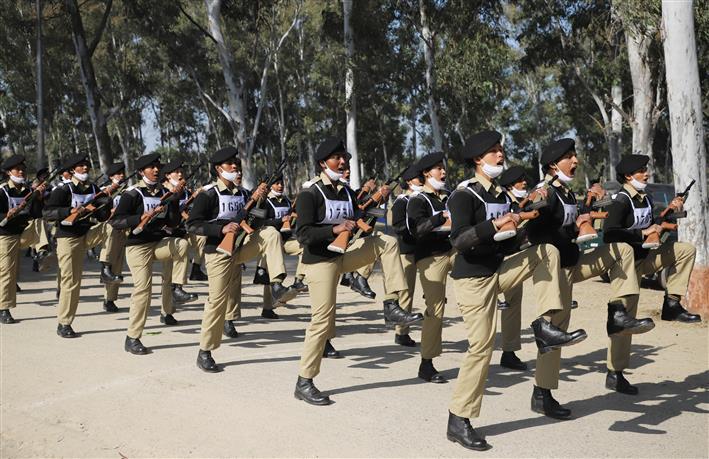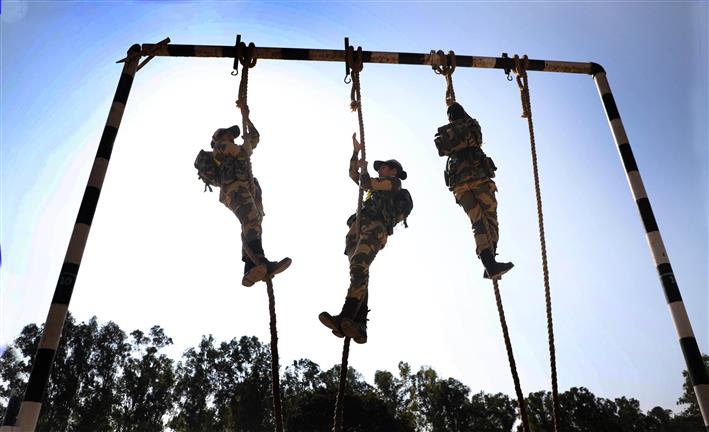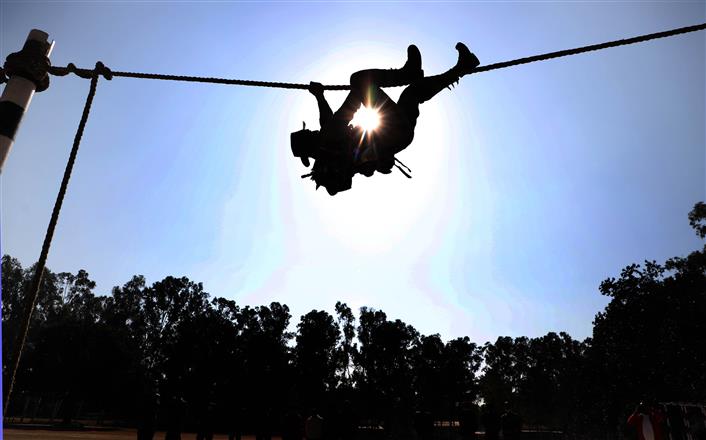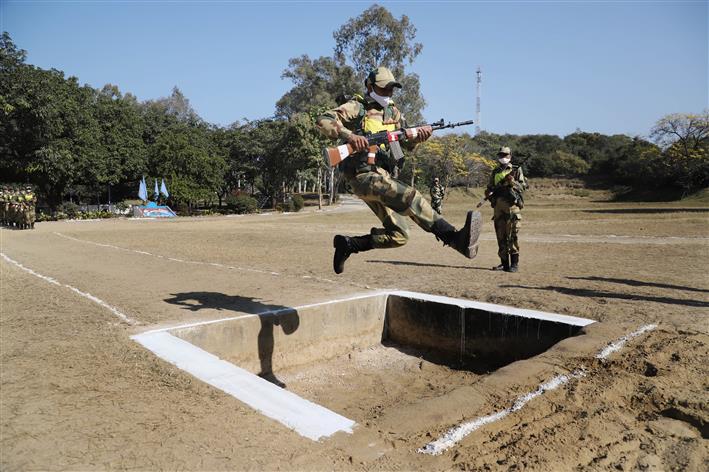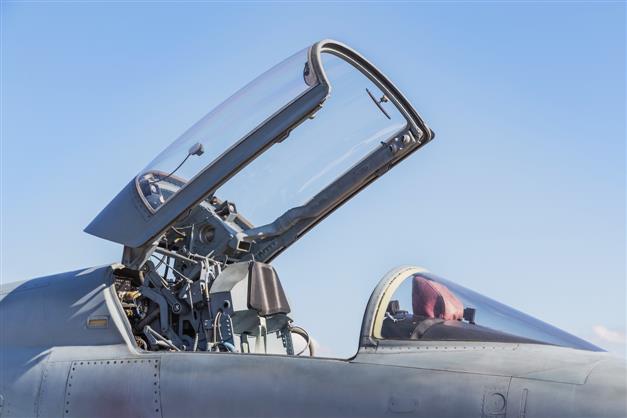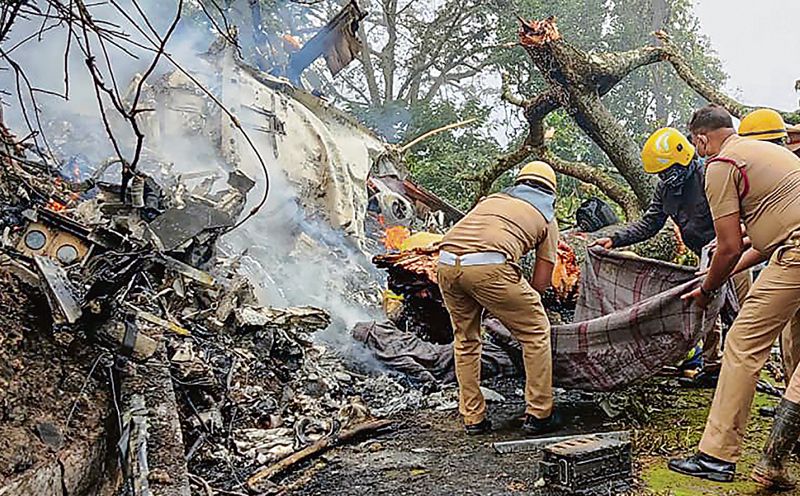
Tragic trajectory: Reasons for aviation hazards have not been easy to pinpoint. PTI

Media reports indicate CFIT (Controlled Flight Into Terrain) as the likely cause of last month’s Mi-17 crash at Coonoor that claimed the lives of General Bipin Rawat and 13 others. The Court of Inquiry has now apparently come out with its findings in good time. After the cockpit voice recorder and the flight data recorder analyses, besides other inputs such as radio calls with ground stations, air traffic control and possibly even accounts from some ground observers, it must have been amply clear to them that the aircraft itself was airworthy and there were no other contributory aspects such as crew incapacitation.
The Kobe Bryant chopper crash in Los Angeles in 2020 was eerily similar. Another high-profile accident attributed to CFIT was the 2003 Fokker crash into hilly terrain near Kohat that killed Pakistan Air Chief Mushaf Ali Mir. In these VVIP cases, the pilots would have been under added pressure to make it on time and this could have induced disorientation for them, perhaps flying in marginal weather. Casualty numbers were high too in all three cases.
One of the basic subjects a trainee pilot learns in the IAF is aviation medicine. Any pilot, especially a military one, has to understand the aeromedical aspects of the flying ambit. Disorientation is a phenomenon all pilots are taught to recognise and counter during training. The main requirement is to realise when one encounters the situation. Thereafter is the need to revert to instruments in a timely fashion so that aspects such as “leans” and “autokinesis” do not endanger the flight.
In the Coonoor instance, it is plausible that the pilot in command, statedly the Wing Commander and CO of the unit, experienced disorientation while willy-nilly confronting hazy or cloudy conditions, which denied him visual cues and affected his situational awareness. The advantage in twin- crew aircraft is that the second pilot could save the situation as it is very unlikely that both pilots simultaneously get disoriented. But in this case, the fact that the co-pilot was a Squadron Leader, who was a subordinate of the Captain organisationally, could have affected his ability to intervene or take over control.
The IAF, more so in the transport and helicopter streams, spends considerable time towards crew resource management (CRM) exactly for this purpose. In the cockpit space, both pilots need to know exactly what is expected of each pilot. In any case, they are constantly in communication on the intercom (if for any reason that fails, they can physically attract each other’s attention to indicate taking over of flying controls or such. We just cannot afford to let a situation develop where one pilot is disoriented and unable to fly safely and the second pilot who is not disoriented is unable to intervene for whatever reason.
Another important aspect is the adage that disorientation spares no one, regardless of experience, if the requisite causatory conditions obtain. So, even very experienced pilots can get disoriented. Hence, the vulnerability to phenomena such as leans or autokinesis! In the first one of “leans”, the human middle ear vestibular organ causes a feeling of the aircraft turning to one side when actually the wings are level, all because the initial control inputs were below the sensory threshold of the celia within the vestibular organ and any subsequent control input causes a sensation of “leaning” to the opposite side and consequent disastrous implications, should the pilot not steadfastedly trust his instruments. These aspects of flying are reinforced during the Air Crew Examining Board visits and Instrument Rating Tests.
Autokinesis is another aero-medical condition wherein a single stationary light source at night gives a feeling as though the light source is moving, thus jeopardising the pilot’s situational awareness. Given that such situations could be confronted by any pilot in appropriate weather and visibility conditions, onboard features such as a terrain warning radar would of course make it that much easier for the pilot to reorient. But then, these are expensive add-ons on any aeroplane or helicopter and that is perhaps the reason why regulators such as the Federal Aviation Administration (FAA) or the Directorate General of Civil Aviation (DGCA) have not laid it down as a mandatory aid on board. While we don’t yet know what the recommendations of Air Marshal Manavendra Singh-led Court of Inquiry are, it is possible that a cut-off time to fly in a valley or mountainous terrain, especially for helicopters, may now be introduced in South India too, as has been in vogue up North and in the North-East. This, of course, is mainly weather-driven, and on account of prevalence of phenomena such as ‘mountain waves’ in the vicinity of peaks, causing unforeseen updrafts and downdrafts that could impact aircraft safety.
The CFIT is thus a real hazard in aviation, whatever be the causatory aspects. It may not always be “finger trouble” as the fly boys call it, but there’s no denying that experience does overcome such accidents generally. The need for a reasonable amount of monthly flying hours by each pilot in a flying unit need not be overstated. More so for VVIP flying tasks wherein pressures on the pilot are of a different kind and the consequence of any goof-up are invariably too prohibitive.
This is an aspect proven time and again all over the world in civil and military flying. Like they say, God never intended man to fly, but when his ingenuity took him into that realm, an entire slew of dos and don’ts became inevitable and anyone who flouted them without the wherewithal in terms of professional acumen as a back-up was bound to come a cropper.












